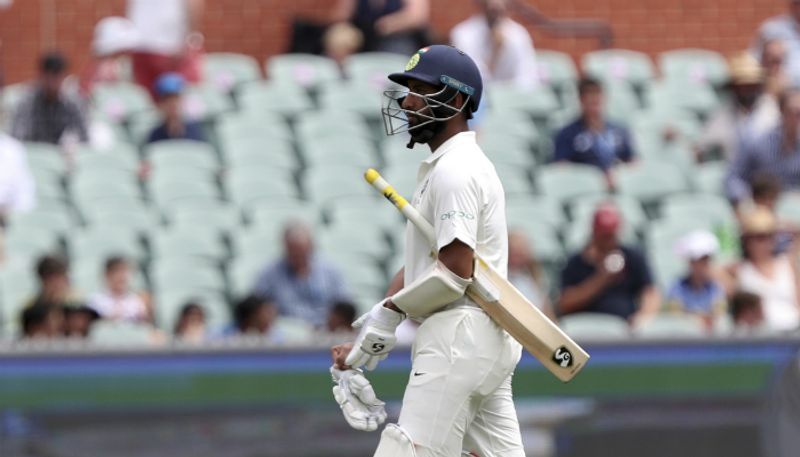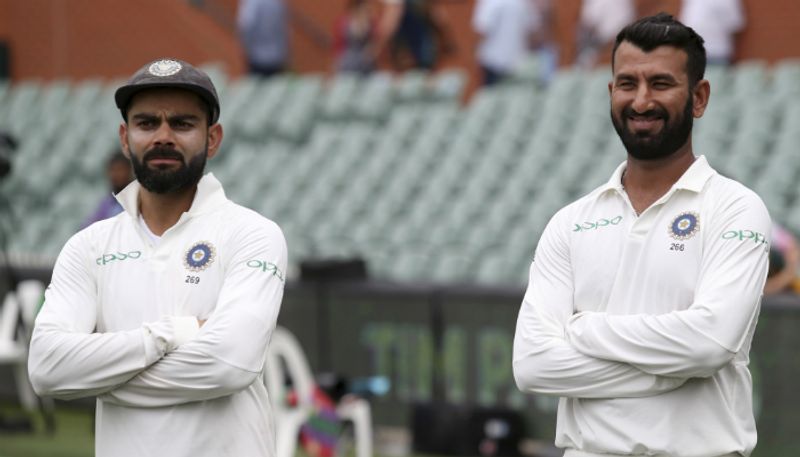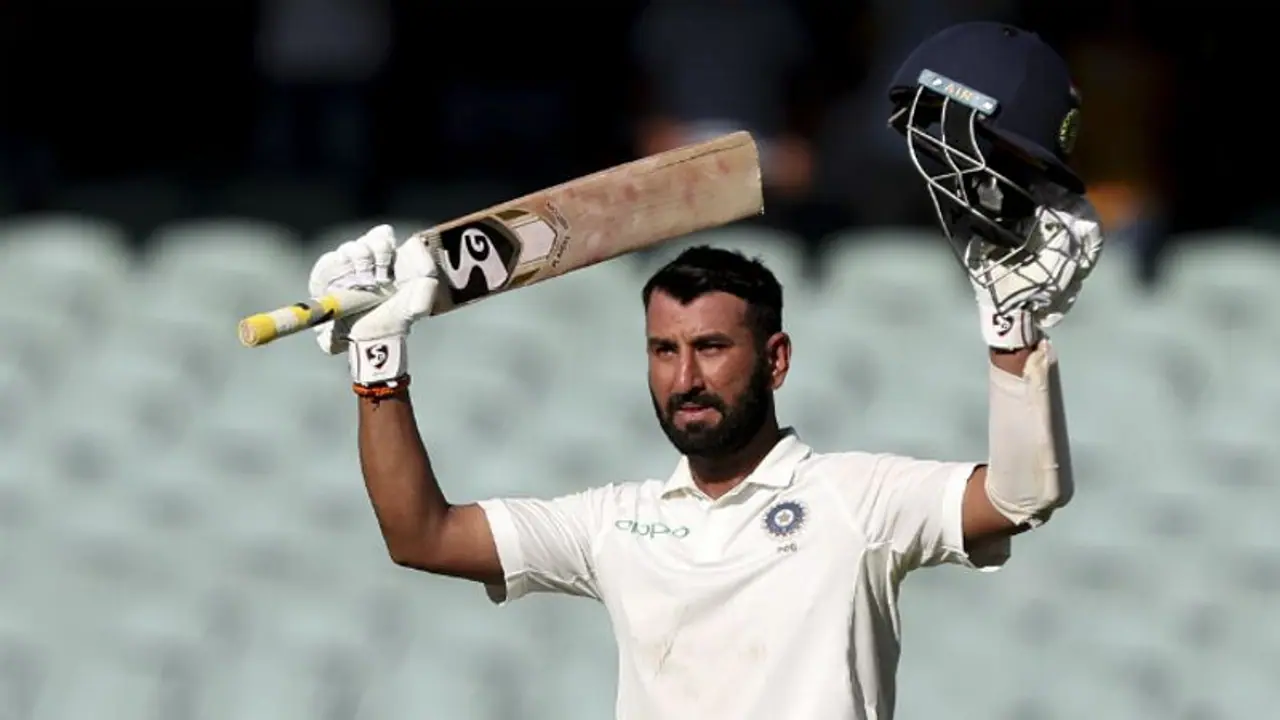Test cricket is like architecture. The building, when finished, is for everyone to admire standing outside, reading the name plastered on its front door. Not many walking past wonder about the architect. Capture this analogy and ask – where is Cheteshwar Pujara’s joyous image after victory on Monday evening?
Adelaide: For India, Test cricket at the Adelaide Oval has only been about lasting images. Back in 2014, it was Virat Kohli, bending over in utter defeat, as his twin hundreds were not enough to win on a turning track. Now, in 2018, Kohli’s image – that roaring victory cry – is plastered over all Australian newspapers on Tuesday morning after India took a 1-0 lead in the four-Test series here.
Do you remember the Indian tour here in 2003-04? There was another captain, and Sourav Ganguly’s victorious image from Adelaide encapsulated standing at the boundary, clapping for his team-mate who had just ‘batted like God’. Nah, the lasting image from that victory at the Adelaide Oval was Rahul Dravid exulting with his bat raised and cap in the other hand, as he hit the winning runs after batting for five days.
Also read: Virat Kohli & Co win pitched battle in Adelaide, justify tag of 'world's best team'
Test cricket is like architecture. The building, when finished, is for everyone to admire standing outside, reading the name plastered on its front door. Not many walking past wonder about the architect. Capture this analogy and ask – where is Cheteshwar Pujara’s joyous image after victory on Monday evening?
The first Test finished in such a nervy manner, lending into boisterous celebrations of as much joy as relief that perhaps the cameramen forgot to pan out to find the man who made this win achievable for India. Such was the pandemonium of going one-up that it is impossible to recall where Pujara was fielding when R Ashwin bowled the last delivery of this match. Knowing him, you can imagine half a fist pump, but a large smile that covered his entire face, stretching it even, and an excited dash for hugs with his teammates.
But, do you still want Pujara’s lasting image from this Adelaide Test? Of course, you do. Well, refer to day four, when he got out in the second innings. Dismissed on the last ball of the 90th over of that innings, Pujara walked back shaking his head – after facing 450 balls in the match, the second highest ever faced by an Indian batsman in a Test on Australian soil after Sachin Tendulkar’s 525 at Sydney in 2004.

He had stepped forward with a big stride, but wasn’t able to smother the bounce from the rough that Nathan Lyon had produced. He had put his bat behind the pad, but somehow the ball looped up to kiss his glove and onto the short-leg fielder’s hands. He had scored 194 runs in this first Test – a third of India’s total runs in the match and when halved, he still had more runs than any other individual score on either side. Yet, Pujara walked back shaking his head.
There have been other such head-shaking moments in 2018. Pujara probably shook his head when run-out twice as India fought hard but couldn’t manage to stay afloat in Centurion, South Africa. Caught in a warped definition of ‘intent’, this was a batsman confused, not in searching his identity, but whether he even belonged to this Indian team that had suddenly started to look like a bunch of misfits.
Also read: India vs Australia series schedule
Then, came the biggest disappointment – being left out of the first Test in Birmingham, that too after two seasons of county cricket under his belt. It was biggest head-shaking moment of all, and not for Pujara alone, but for a billion people watching from across the world as England won by 31 runs.
In that light, this Adelaide Test has come as a dual revelation. First, it was seen in how Pujara set a template for all other batsmen – both Indian and Australian – as the match progressed. He spoke about ‘batting two sessions before knowing what shots he could or could not play’. It provided a steady blueprint for the Indian second innings, wherein even Kohli batted with a strike rate of 30-odd, unlike his dominant style.
It was as if the true meaning of intent had been revealed. Earlier, it had been defined as pushing forcefully through walls. Pujara simply opened a door that no one had the key to, and once across, he made copies for other willing Indian batsmen to open similar doors. Barring the lower order collapse, it was execution of batting fundamentals at its finest.

And this is where the second point emanates. Ahead of the first Test, there were question marks on the Indian batting and how targeting Kohli was pointless for the Australian bowlers. Instead, Josh Hazlewood came out and spoke about India’s dependency on their skipper as a weak point.
Given how India’s top-order tried to dominate in the first innings, you arrive at the conclusion that Kohli’s style perhaps might not work for other batsmen in tougher, overseas conditions. Surely, that has been the case throughout 2018, wherein Kohli has been the lone man standing among ruins in South Africa and England.
Also read: Pujara accepts team's batting failure in Adelaide
What he needed was a helping hand, and whenever Pujara provided one – with a fighting half-century at Johannesburg and another in the second innings at Nottingham – India found a way to win. He almost set up the game at Southampton too, but going for a 2-2 draw, Pujara’s cheap dismissal in the second innings meant that even Kohli and Ajinya Rahane couldn’t prevent that series’ loss.
Take it in summation with Hazlewood’s words, and you arrive at a re-incarnation point from 2003. All those years, Tendulkar’s runs had kept India alive and kicking, but they were not enough to win those crucial matches overseas. Dravid was needed then, and he is needed now. Only, he is in Pujara’s guise to Kohli’s Tendulkar-esque avatar.
It is the second Dravidian coming. If India are to win overseas Test series, and not only this current one in Australia, Pujara matters the most.
